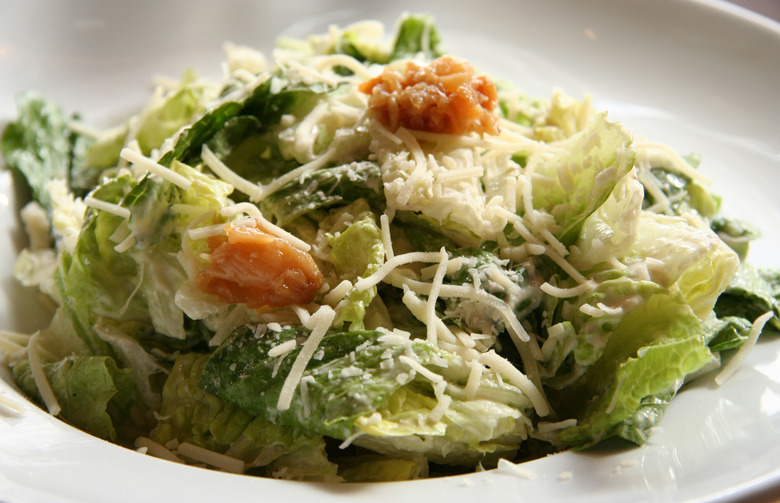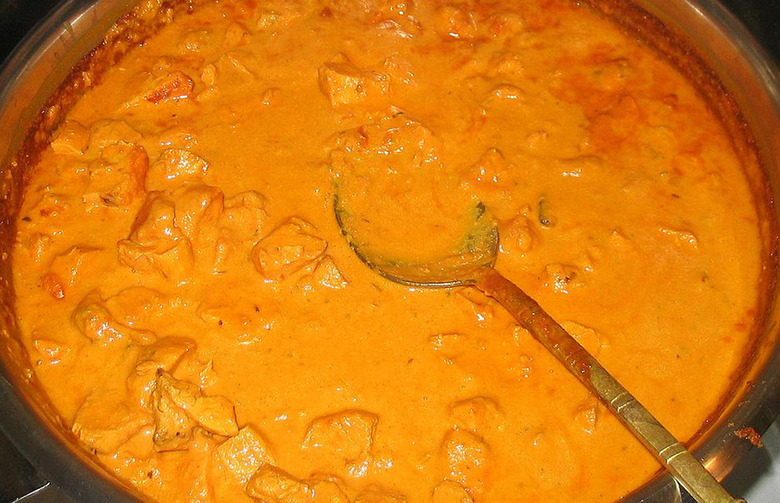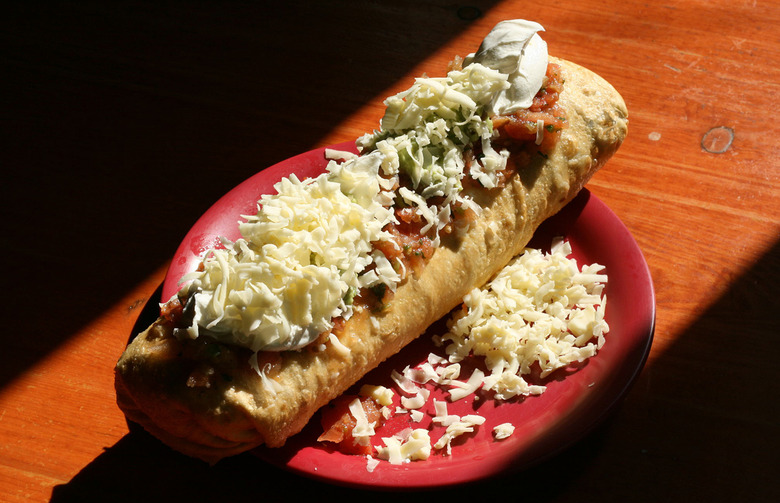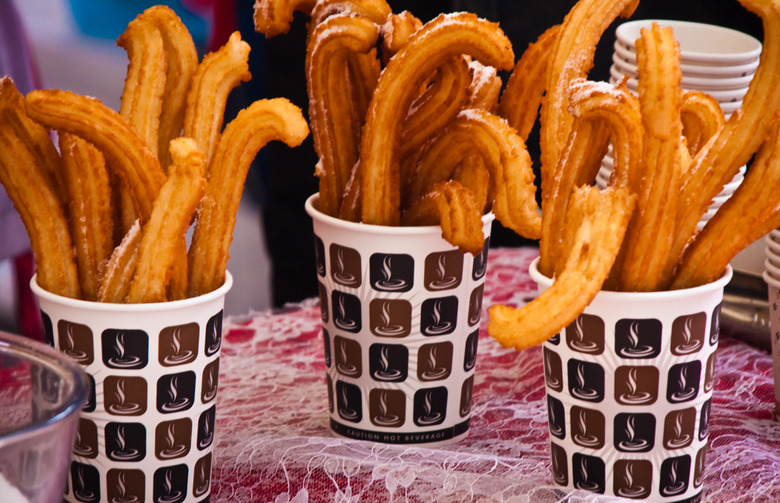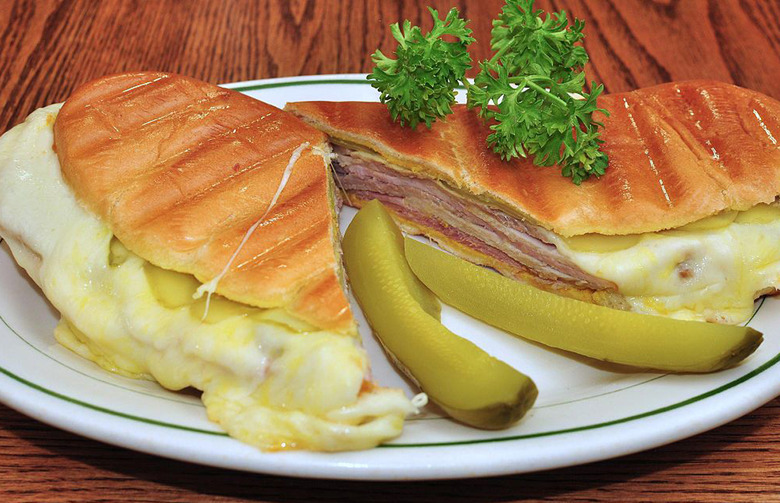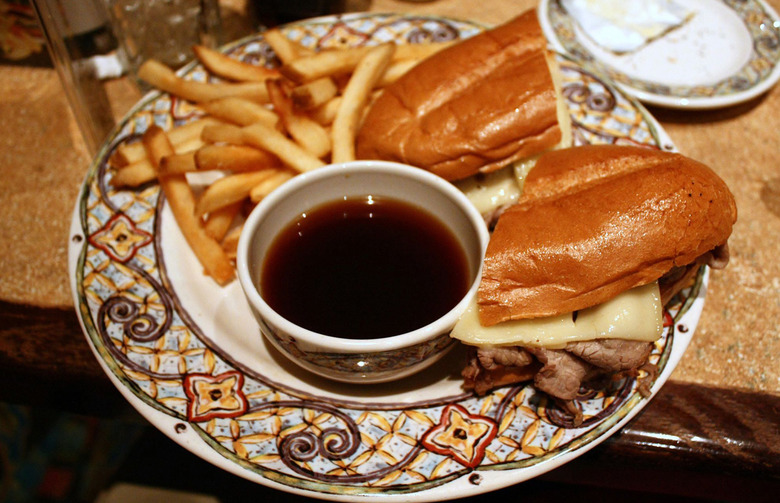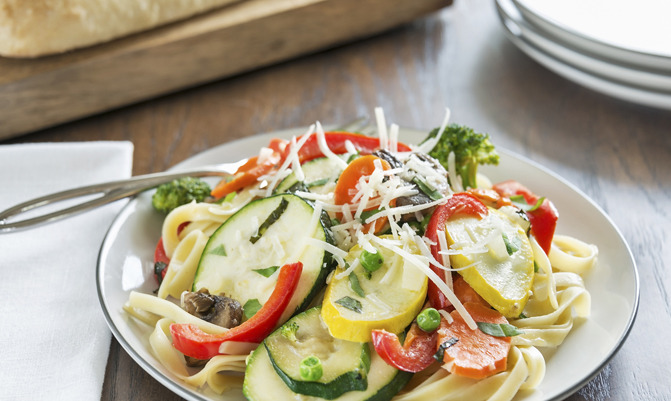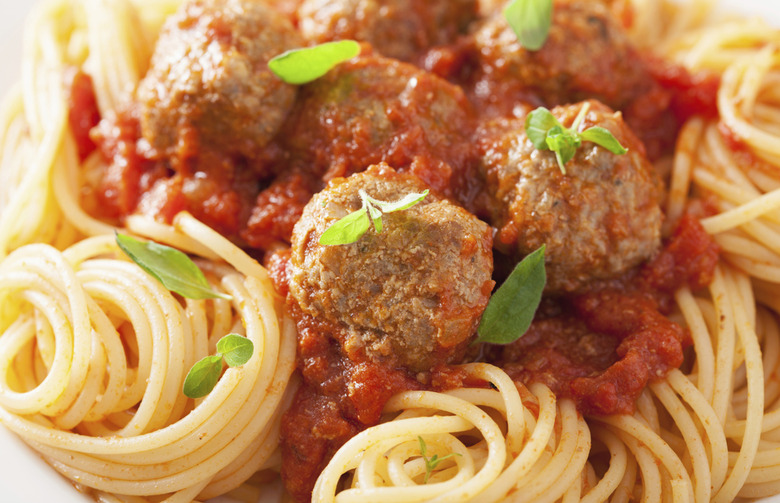Chop Suey, Pasta Primavera, And Other Ethnic Dishes That Really Aren't
There are many ethnic foods that are not actually from the countries that they seem to be from. Some of these won't surprise us at all, but others, well, let's just say they really fooled us. Here are nine "ethnic" dishes that have surprisingly non-exotic origins.
Caesar Salad
Not only is Caesar salad not Italian, it's not American, either. In fact, it's Mexican. It was invented in 1924 by Italian-American restaurateur Caesar Cardini, who made the salad when he had to entertain friends but was low on supplies. He tossed together whatever he could find in his kitchen, and, pleased with the results, began serving it at his restaurant in Tijuana, Mexico, which is still in operation today.
Chicken Tikka Masala
The question of who owns chicken tikka masala is hotly contested, reports Roads & Kingdoms. Many believe vociferously enough that it was invented by a Bangladeshi restaurant owner in Glasgow that Parliament motioned to for Glasgow to be given EU Protected Designation of Origin for it. Nevertheless, Marks & Spencer sells 19 tons of their frozen CTM meals a week, and there are more curry houses in London than there are in Delhi or Mumbai. That might be enough to call it a British dish.
Chimichanga
A few different Arizona restaurants claim to have invented this deep-fried burrito, and guess what? Arizona is not in Mexico.
Chop Suey
Chop suey is not only American-Chinese, but German-Chinese, Indian-Chinese, Polish-Chinese, and Indonesian-Chinese. The only kind of Chinese it isn't is actual Chinese. To be fair, since chop suey is just simple dish of stir-fried meat and vegetables, it is probably based on a similar Chinese dish. Confusingly enough, in India, "American chop suey" involves ketchup and deep-fried noodles, and chop suey in America does not.
Churros
Sweet churros are not from Spain, but Portugal. However, churros, technically, are from China. Portuguese merchants brought youtiao (elongated savory crullers, still popular in China today) to Europe from China, swapped salt for sugar, and created the now-familiar star-shaped mold.
Cuban Sandwich
Cuban sandwiches are more Floridian than Cuban, because they were first made in cafes catering to the tastes of Cuban laborers working in Tampa and Key West. In fact, a battle for the title of inventor of the Cuban sandwich is waged by Tampa and Miami.
French Dip Sandwich
There's nothing French about the French dip except for the name, which comes from the fact that thin-sliced roast beef is sandwiched inside a French roll. Two Los Angeles restaurants claim to have invented the sandwich — Philippe The Original and Cole's — in the early years of the twentieth century. Dip the sandwich in beef jus, which is served alongside it, for a messy, delicious, and 100 percent American meal.
Pasta Primavera
While this dish might sound Italian, it was actually invented by restaurateur Sirio Maccioni and first served at his renowned New York City restaurant Le Cirque. The combination of pasta, cream, cheese, and lightly cooked vegetables was a hit from the minute it showed up on the menu, and was one of the most popular dishes to emerge from the 1970s American dining scene.
Spaghetti and Meatballs
Spaghetti and meatballs were first combined on the same plate in America, in an attempt to appeal to the American belief that every meal should include meat. In Italy, meatballs are served as their own dish, with no pasta in sight. Even today, you'll never find spaghetti and meatballs in Italy, and if you do, it's a big red flag that you're in a tourist trap.

